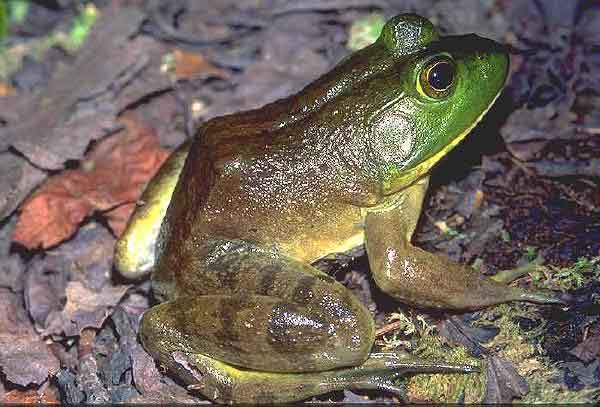
The fungus - Batrachochytrium dendrobatidis, pictured above - is believed to have been introduced into Britain via american species (Rana catesbeiana) pictured below.

From the BBC:
"This disease is a major cause of amphibian population declines and extinctions worldwide. So it's pretty bad news that it has been found in the wild in this country."
*snip*
The fungus was identified six years ago and is firmly established in parts of the Americas, Australia and Europe. The disease it causes, chytridiomycosis, appears to kill amphibians by damaging their sensitive skins, blocking the passage of air and moisture.
"I think there is great concern," said Dr Richard Griffiths, an amphibian specialist at the University of Kent in Canterbury.
"It will take more work to see if infected animals can be taken out of the wild, cleaned up and released. At the moment, people are concentrating on keeping [the disease] out."
The fungus can be spread via the water:
"The fungus has turned up in many captive collections of exotic amphibians. And it can spread by motile zoospores in water," he explained.
"So someone washing out their vivarium and pouring the water into the garden could inadvertently bring native species into contact with it."
Below is a diagram of the fungus life cycle.









